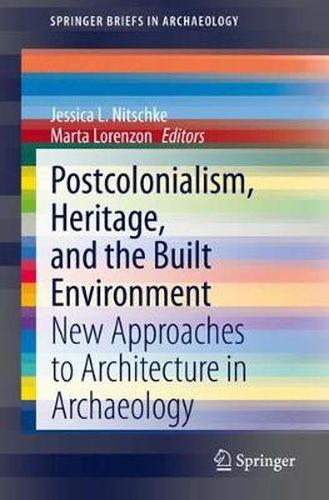Readings Newsletter
Become a Readings Member to make your shopping experience even easier.
Sign in or sign up for free!
You’re not far away from qualifying for FREE standard shipping within Australia
You’ve qualified for FREE standard shipping within Australia
The cart is loading…






This book proposes new ways of looking at the built environment in archaeology, specifically through postcolonial perspectives. It brings together scholars and professionals from the fields of archaeology, urban studies, architectural history, and heritage in order to offer fresh perspectives on extracting and interpreting social and cultural information from architecture and monuments. The goal is to show how on-going critical engagement with the postcolonial critique can help archaeologists pursue more inclusive, sensitive, and nuanced interpretations of the built environment of the past and contribute to heritage discussions in the present.
The chapters present case studies from Africa, Greece, Belgium, Australia, Syria, Kuala Lumpur, South Africa, and Chile, covering a wide range of chronological periods and settings. Through these diverse case studies, this volume encourages the reader to rethink the analytical frameworks and methods traditionally employed in the investigation of built spaces of the past. To the extent that these built spaces continue to shape identities and social relationships today, the book also encourages the reader to reflect critically on archaeologists’ ability to impact stakeholder communities and shape public perceptions of the past.
$9.00 standard shipping within Australia
FREE standard shipping within Australia for orders over $100.00
Express & International shipping calculated at checkout
This book proposes new ways of looking at the built environment in archaeology, specifically through postcolonial perspectives. It brings together scholars and professionals from the fields of archaeology, urban studies, architectural history, and heritage in order to offer fresh perspectives on extracting and interpreting social and cultural information from architecture and monuments. The goal is to show how on-going critical engagement with the postcolonial critique can help archaeologists pursue more inclusive, sensitive, and nuanced interpretations of the built environment of the past and contribute to heritage discussions in the present.
The chapters present case studies from Africa, Greece, Belgium, Australia, Syria, Kuala Lumpur, South Africa, and Chile, covering a wide range of chronological periods and settings. Through these diverse case studies, this volume encourages the reader to rethink the analytical frameworks and methods traditionally employed in the investigation of built spaces of the past. To the extent that these built spaces continue to shape identities and social relationships today, the book also encourages the reader to reflect critically on archaeologists’ ability to impact stakeholder communities and shape public perceptions of the past.